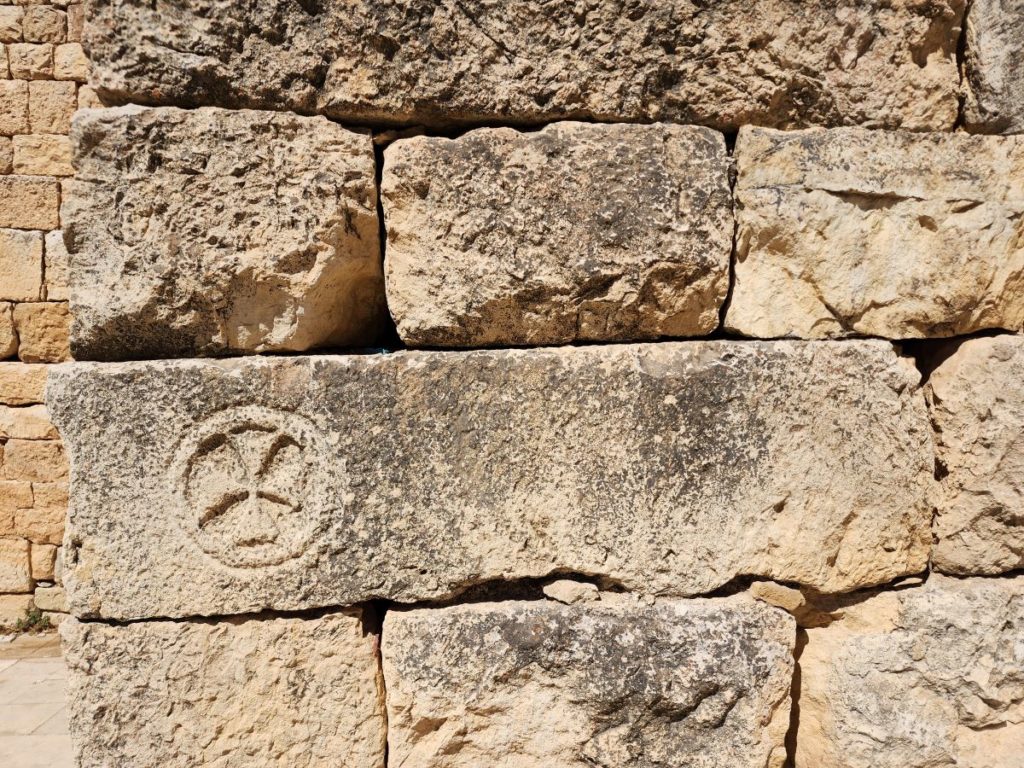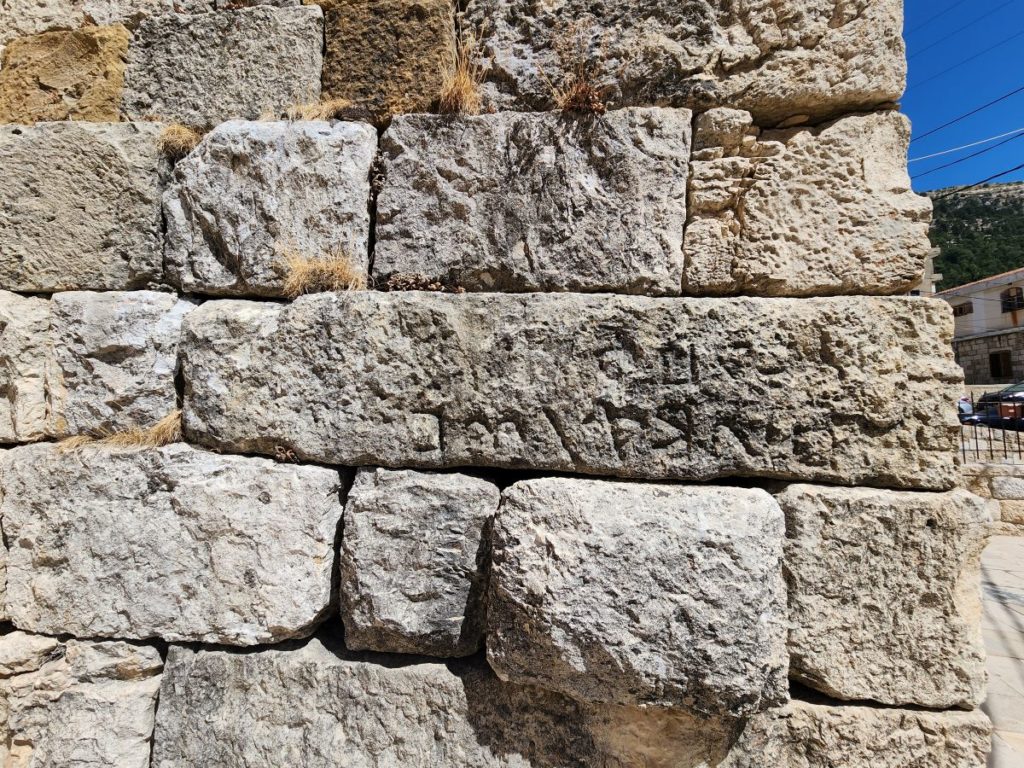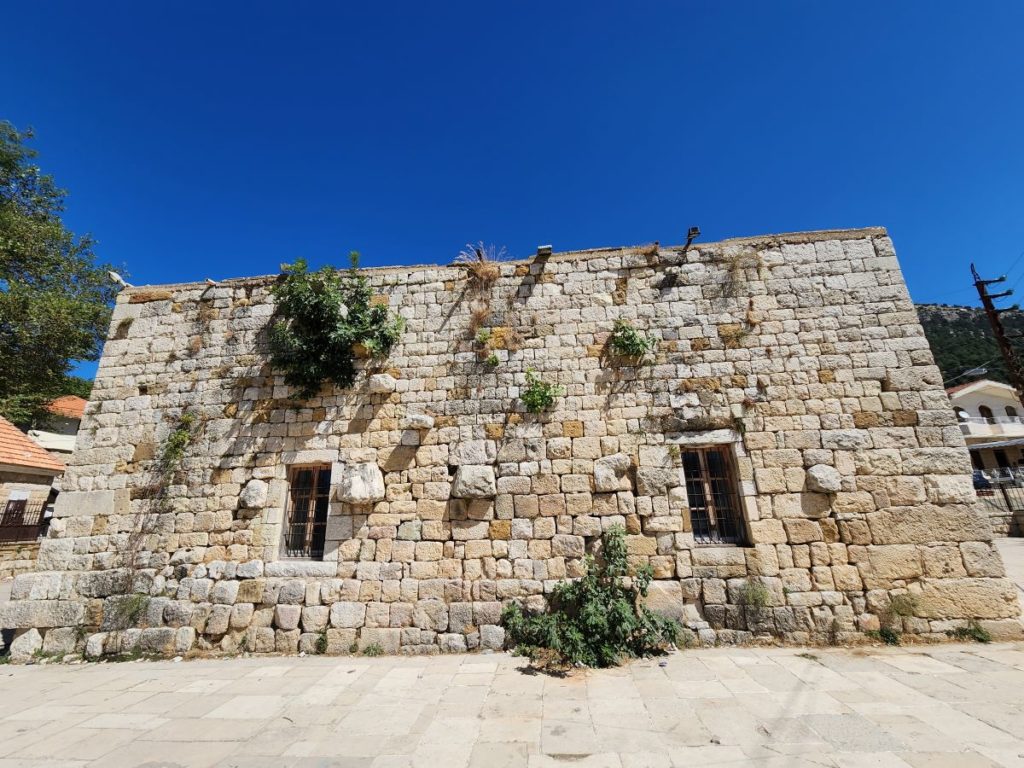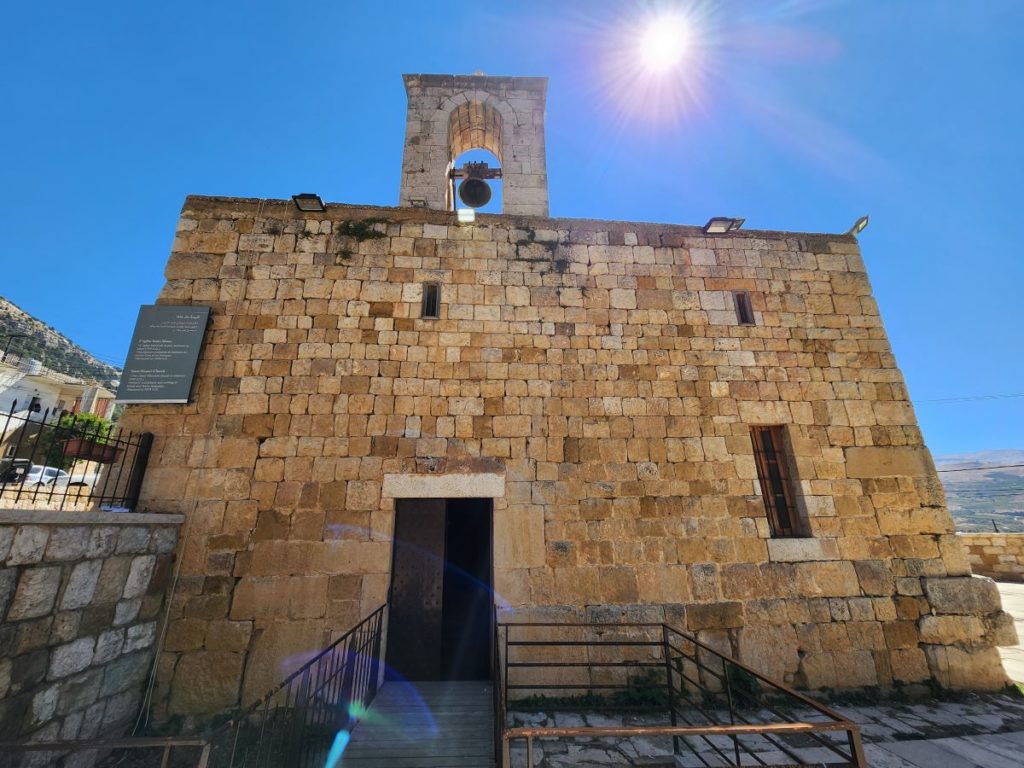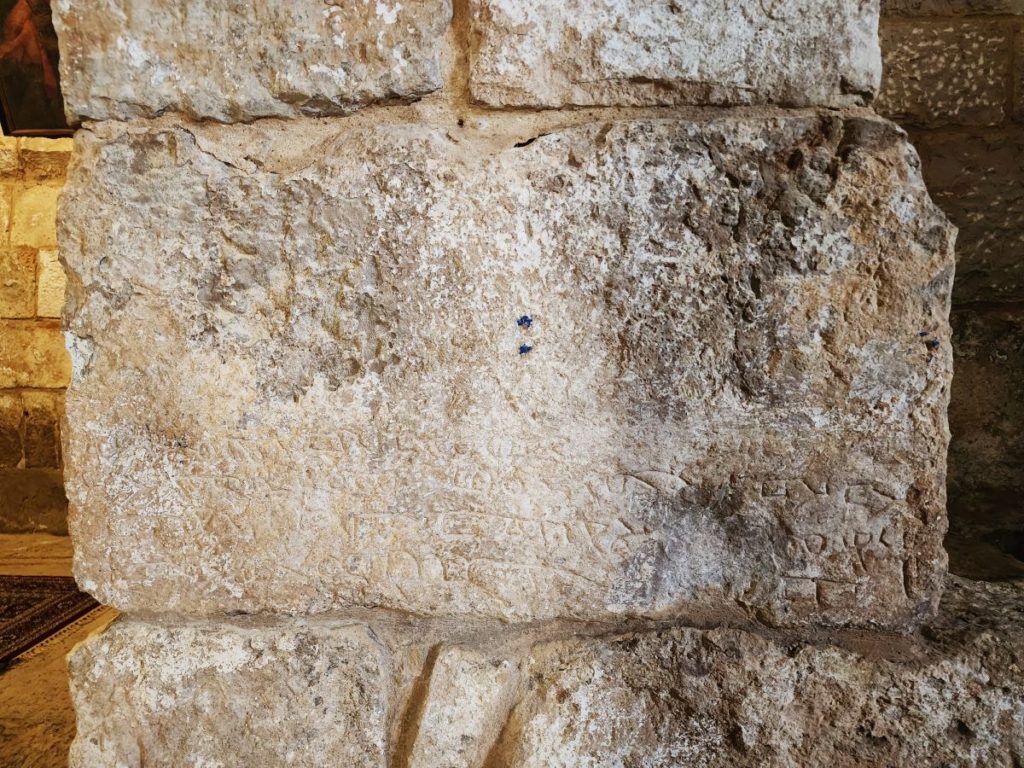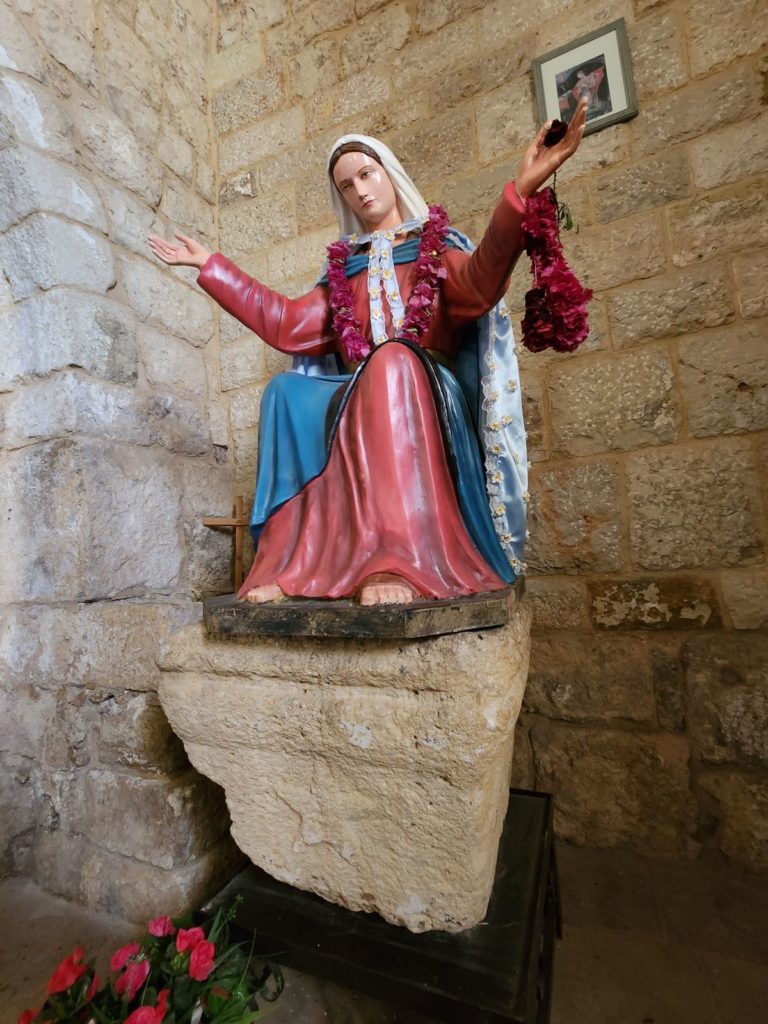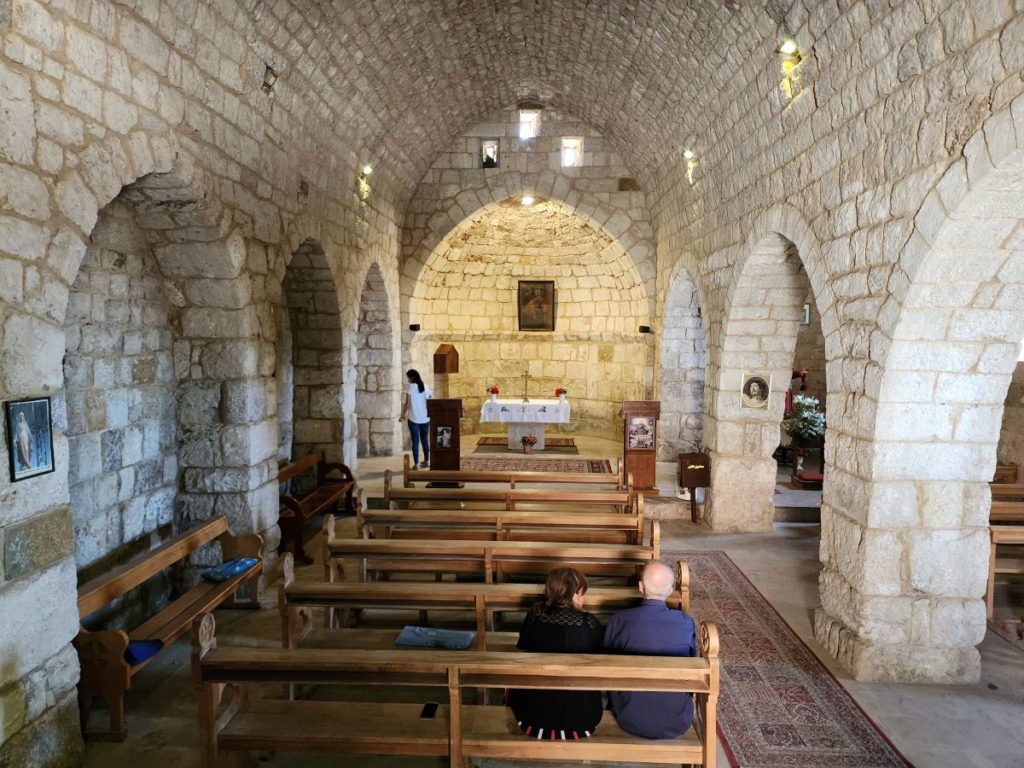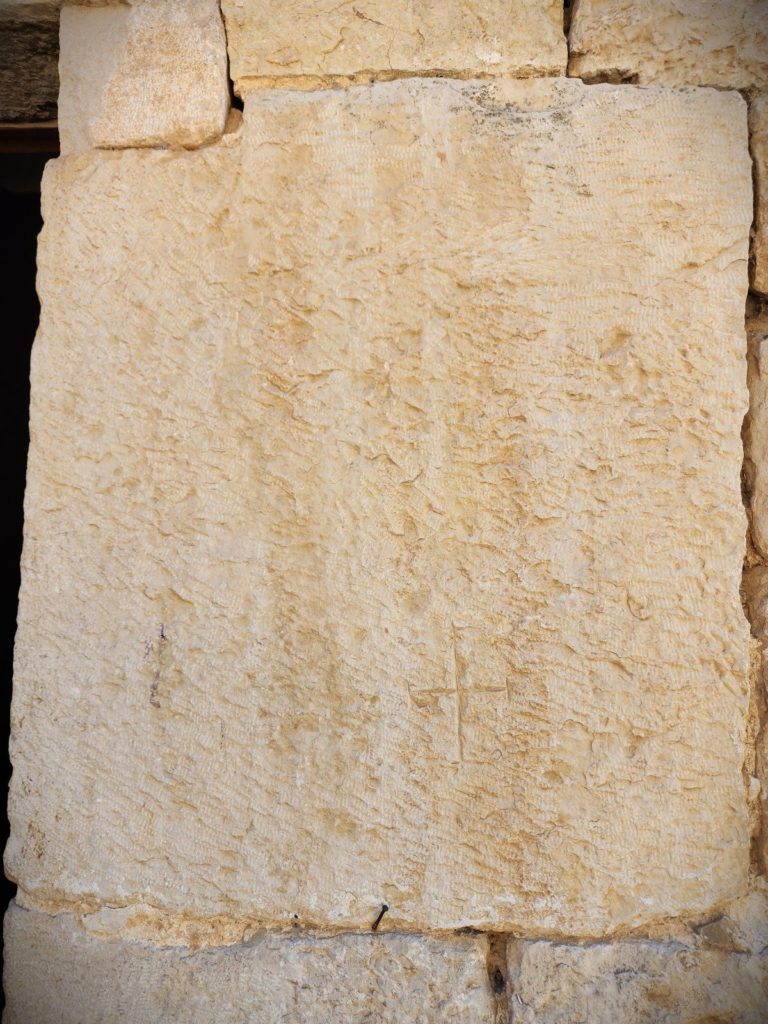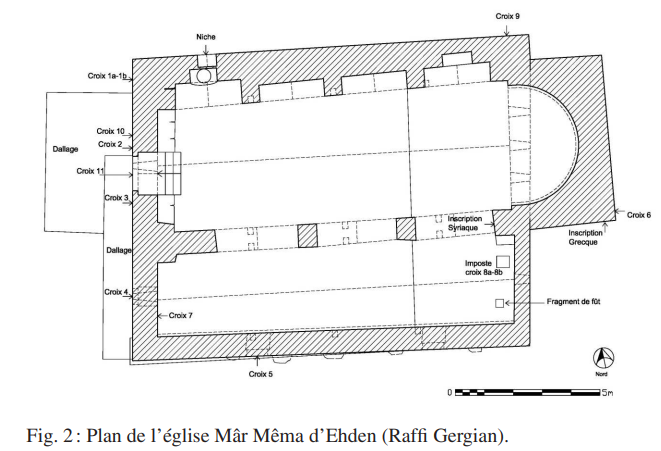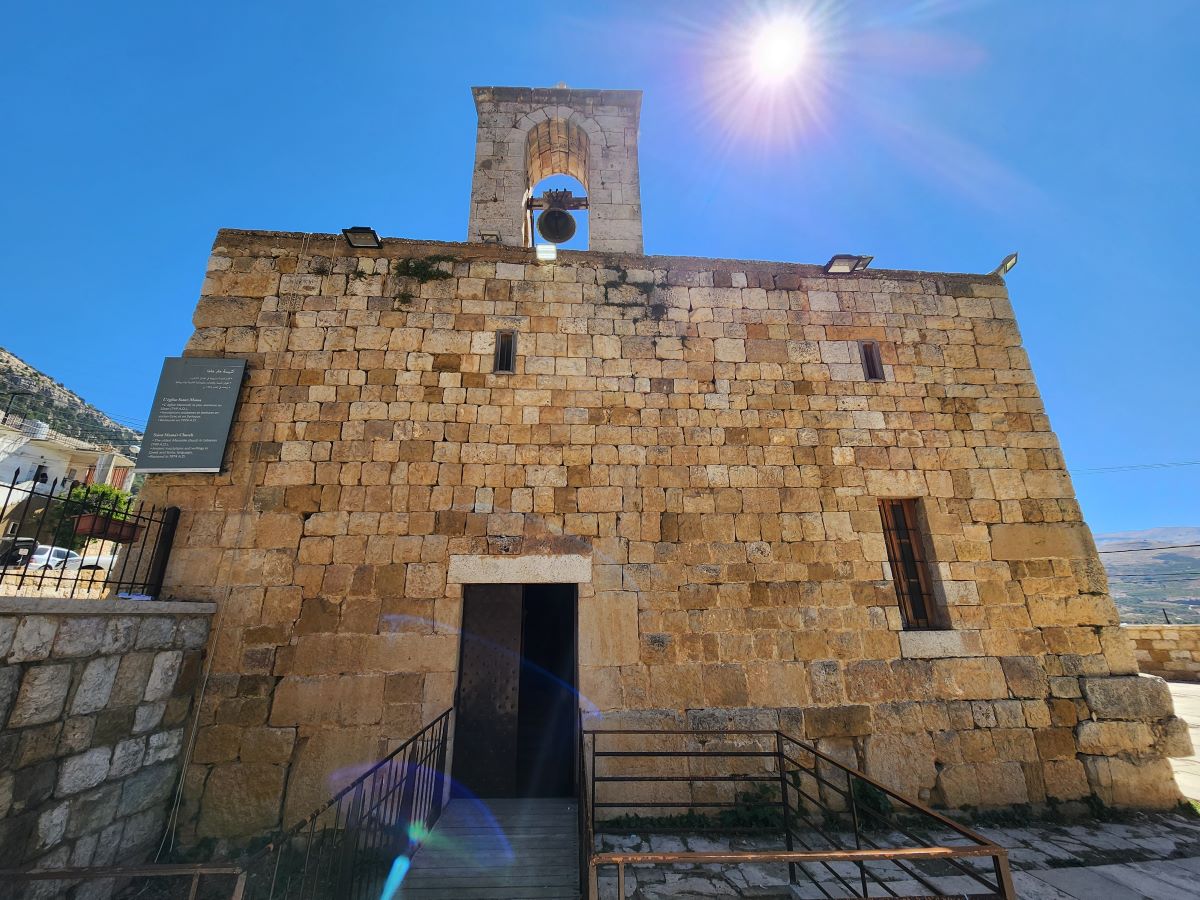Mar Mema church in Ehden is historically noted in “Manarat al-Aqdas” by Patriarch Istephan el Duweihi (1616-1702) as constructed in 749 AD.
Historical Background
The church reveals a complex history through its architecture and artifacts. Structural elements and fragments explored during archeological studies reveal that at least two churches existed during the Byzantine/Post-Byzantine era, and underwent significant modifications throughout the following centuries, notably during the Ottoman period.
The church may have been built on top of a Roman-era temple, as attested by columns, capitals, and specific stones resued in the church’s structure, with a couple of those bearing Latin inscriptions.
Structure
The chapel includes two naves separated by three arcades, resembling a basilica with a missing northern aisle. Arcades supporting the northern vault suggest they once opened to a side nave, now replaced by the nearby road. Behind the altar, restorers found a fragment of a linearly decorated mosaic, likely dating back to before the 8th century AD.
The presence of around ten crosses engraved on stones around the church, having different sizes and shapes, raises questions about the chapel’s function, possibly linked to a medieval cemetery nearby.
Syriac Inscription
A unique engraved Syriac inscription can be found on a stone, installed upside down and covered with plaster on the fourth course of the eastern pillar of the southern row. It comprises four lines of a rather irregular script, and the inscription is reused and dates from an earlier state of the monument, around 790-791 AD, or about forty years after the date given by the patriarch Duweihi for the foundation of the church. The inscription reads:
Bšm ’Lh’ Mn Mn’ [Dmyt’ ? ’T]Bny
Byt’ Hn’ Bšnt ’[Lp Wm’’ ?] Wtrtn
D’Lksndrws. Vac. Hw’ Zw‘’ Bq’b’
Rb’ Wnpl Qwrnshwy.
“In the name of God who resurrects [the dead?] this house was built, in the year one thousand and one hundred and two of Alexander. There was a great earthquake in Qobo and he dropped his hammers.”
Karim Sokhn
Tour Operator & Tour Guide
References:
L’Église Mâr Mêma D’Ehden et Son Inscription Syriaque, Lévon Nordiguian et Jean-Baptiste Yon
